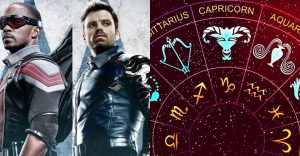Green Room: Why Patrick Stewart Was Terrified Of His Own Character

Of all the terrifying moments of Jeremy Saulnier’s high-octane thriller Green Room, perhaps the most gut-wrenching is the cold and sinister introduction of Patrick Stewart’s Darcy Banker, the unsettlingly calculating leader of the neo-Nazi villains of the movie. The character was so hideously dark that Stewart himself was frightened of his own role. It’s the hyper-realistic nature of Darcy’s personality that unnerved Stewart so much, the deceptively friendly and logical behavior that gives way to an underlying evil hidden within.
The effectiveness of Green Room‘s horror lies in its bare-faced violence and plausibility of the premise. The punk band that becomes trapped in the neo-Nazi bar, as well as the audience, discovers that the true brutality of white nationalism is its mundanity. The Nazis in the movie aren’t exaggerated, overly dramatic versions of real-life monsters. Rather, they come across as ordinary people keeping a malevolent secret literally hidden under the ground of their hideout. It’s this element of down-to-earth authenticity that attracted Patrick Stewart to the script.
Stewart is known as a preeminent thespian actor, starting off his career in Shakespearean drama before moving on to star in his most famous roles in Star Trek: The Next Generation and the X-Men movies. It’s this particular background that makes his appearance in Green Room so shocking, a sharp turn from his usual roles as straight-laced arbiters of conduct and morality. Yet Stewart retains his trademark logic and demonstrates the calm leadership that his characters are often known for, only this time it’s a deeply perverted distortion of those respectable ideologies found at the hearts of people like Captain Picard and Professor Xavier.
Patrick Stewart Was Terrified of the Role He Played in Green Book

In an interview with IndieWire, Stewart explained that he had to take a break from reading the script to check the entrances to his house and turn on the perimeter lights and alarm. Like any good scary story should do, Green Room‘s screenplay made Stewart jumpy at the slightest sounds emanating from within his home but urged him to continue reading to see what happened next. It was the sudden and radical shifts to “unspeakable violence and pain and of terror” committed by “recognizable people… you’d pass in the street and never look twice at” that spooked the actor while also drawing him into the character of Darcy Banker.
Darcy’s primary characteristic is his calm pragmatism, which gives his victims a false sense of security and which also helps him remain smooth under pressure while he devises his plans. Stewart explains the character in these terms:
“There’s so much about him that seems reasonable and anxious to do the best thing, wanting to help these kids out, wanting to get them away so they can get on with their tour and their lives. But of course, all that is a facade.”
The actor mentions that despite the rationality that Darcy may exhibit, he and his cohorts are definitely not people anyone can reason with. In the film, Darcy promises the punk band that it would be best for both sides to calmly negotiate, but in reality, the skinhead leader is setting up traps to ensure that his gang’s dark secrets are kept safely concealed. The assuring leadership that Patrick Stewart often demonstrates in his roles can be so collected that the effect is mesmerizing, but that preconceived idea that his character has the situation under control leads to a terrifying subversion of expectations in Green Room.
About The Author

















